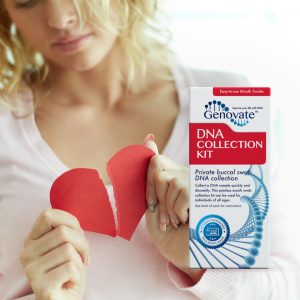Description
Detailed Description
The “male pair-bonding” gene is a genetic variant of the AVPR1A gene. The AVPR1A gene encodes the arginine vasopressin receptor 1A, which binds vasopressin and transmits the signal into the cells.
Vasopressin is a hormone or “chemical messenger” that promotes water retention in the kidneys and increases blood pressure. Most of these effects take place when vasopressin is released into the blood stream.
Vasopressin can also be released directly into the brain and influence social and sexual behavior (such as infidelity). In people with the “male pair-bonding” version of the gene this signal transmission is disrupted.
Men with the RS3 334 allele are less likely to form a strong bond with their partners and are more likely to experience marital crisis or divorce. They are less likely to get married and more likely to cohabitate, than people without the RS3 334 allele. Spouses of men with the RS3 334 allele report feeling less affection and consensus in the marriage.
There is no evidence that this variant influences sexual behaviour in females. However, there are different AVPR1A variations associated with an increased likelihood of infidelity in females. These variants are detected in the Female Infidelity Gene AVPR1A Test.
The Genetics
The AVPR1A gene is located on chromosome 12. We inherit two copies of the gene – one from each parent. A simple DNA test can be done to find out which forms of AVPR1A a person has inherited.
There are three different AVPR1A variants (RS1, RS3 and GT25) that arise due to short tandem repeats (STRs) in the regulatory region, which controls AVPR1A protein levels.
A specific version of RS3, known as the RS3 334 allele, is associated with diminished pair-boding in males. The AVPR1A STR test determines the length of the RS3 repeat region, to find out whether a person has the RS3 334 infidelity variant.
 Discover More
Discover More
Other changes in the AVPR1A gene are also associated with:
- Autism
- Altruistic behavior
- Addictive behavior
- Eating disorders
- Social behavior such as sibling interactions
How it Works
STEP 1.ORDER YOUR KIT: Purchase your kit online.

STEP 2. COLLECT & SEND
Quick and painless DNA sample collection in the comfort of your own home. Mail your sample back to our lab for testing.
STEP3. VIEW RESULTS
Receive your results by mail or email, or view online.











